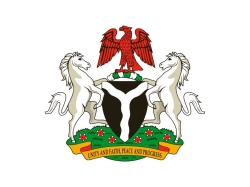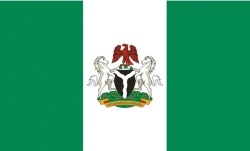
Kwara State, located in the North-Central geopolitical zone of Nigeria, is a culturally rich and strategically positioned state known for its diverse ethnic makeup, agricultural productivity, and educational heritage. Created on May 27, 1967, Kwara is one of the original twelve states carved out during Nigeria's first state creation exercise.
The state operates a decentralized administrative structure made up of 16 Local Government Areas (LGAs). These LGAs serve as the backbone of local governance, responsible for delivering grassroots services in healthcare, education, sanitation, agriculture, and community development.
In this article, we provide a comprehensive list and detailed profiles of all 16 LGAs in Kwara State, highlighting their headquarters, economic activities, unique features, and strategic importance.
Quick Facts About Kwara State
-
Capital: Ilorin
-
Slogan: “State of Harmony”
-
Date of Creation: May 27, 1967
-
Region: North-Central Nigeria
-
Number of LGAs: 16
-
Major Ethnic Groups: Yoruba, Nupe, Baruba, Fulani
-
Main Languages: Yoruba, Nupe, Baruba, English
-
Key Economic Activities: Agriculture, trade, quarrying, education, small-scale manufacturing
-
Bordering States: Kogi, Ekiti, Osun, Oyo, Niger
-
International Border: Republic of Benin (via Baruten LGA)
Full List of LGAs in Kwara State
Here is the complete list of the 16 LGAs in Kwara State along with their respective administrative headquarters:
| S/N | LGA Name | Headquarters |
|---|---|---|
| 1 | Asa | Afon |
| 2 | Baruten | Kosubosu |
| 3 | Edu | Lafiagi |
| 4 | Ekiti | Araromi-Opin |
| 5 | Ifelodun | Share |
| 6 | Ilorin East | Oke-Oyi |
| 7 | Ilorin South | Fufu |
| 8 | Ilorin West | Oja-Oba |
| 9 | Irepodun | Omu-Aran |
| 10 | Isin | Owu-Isin |
| 11 | Kaiama | Kaiama |
| 12 | Moro | Bode Saadu |
| 13 | Offa | Offa |
| 14 | Oke Ero | Iloffa |
| 15 | Oyun | Ilemona |
| 16 | Patigi | Patigi |
Detailed Overview of Each LGA in Kwara State
Below is an in-depth look at the 16 Local Government Areas in Kwara State, including economic strengths, historical significance, and key features:
1. Asa
-
Headquarters: Afon
-
Key Activities: Farming (yam, maize, cassava), pottery
-
Proximity: Borders Ilorin, giving it semi-urban characteristics
-
Notable: Home to many rural communities supporting Ilorin's food supply chain
2. Baruten
-
Headquarters: Kosubosu
-
Border: Shares an international boundary with Benin Republic
-
Ethnic Composition: Baruba people dominate
-
Economy: Cross-border trade, cattle rearing, shea butter production
3. Edu
-
Headquarters: Lafiagi
-
Riverine Advantage: Located along River Niger
-
Occupation: Rice cultivation, fishing, sugarcane farming
-
Notable Industry: Home to the Lafiagi Sugar Company
4. Ekiti
-
Headquarters: Araromi-Opin
-
Geography: Located in the hilly and forested southern belt
-
Major Crops: Cocoa, kolanut, yam
-
Culture: Deeply rooted Yoruba traditions and festivals
5. Ifelodun
-
Headquarters: Share
-
Status: Largest LGA by landmass in Kwara
-
Key Towns: Idofian, Oro-Ago
-
Economy: Diverse agriculture (cassava, palm oil) and artisan crafts
6. Ilorin East
-
Headquarters: Oke-Oyi
-
Suburban Interface: Merges rural life with Ilorin’s metropolitan zone
-
Institutions: Hosts government parastatals and community markets
7. Ilorin South
-
Headquarters: Fufu
-
Urban-Rural Mix: Includes urban settlements and vast farmlands
-
Infrastructure: Growing residential estates, schools, and clinics
8. Ilorin West
-
Headquarters: Oja-Oba
-
Significance: Most urbanized and densely populated LGA in Kwara
-
Economic Activities: Commerce, public administration, small-scale industries
-
Notable Sites: Emir’s Palace, Kwara State Government House
9. Irepodun
-
Headquarters: Omu-Aran
-
Status: One of the most developed southern LGAs
-
Farming: Palm produce, yam, vegetables
-
Education: Home to Landmark University
10. Isin
-
Headquarters: Owu-Isin
-
Population: Sparsely populated but agriculturally viable
-
Features: Natural streams, cocoa farming, community-driven development
11. Kaiama
-
Headquarters: Kaiama
-
Geography: Located in Kwara North, with vast woodlands
-
Economy: Timber, shea nuts, locust beans
-
Cultural Heritage: Home to the Bokobaru people
12. Moro
-
Headquarters: Bode Saadu
-
Key Resources: Limestone deposits, subsistence farming
-
Educational Institutions: Hosts University of Ilorin’s Agricultural Research sites
-
Rivers: Close to Jebba dam and irrigation projects
13. Offa
-
Headquarters: Offa
-
Strengths: Commercial hub, education center
-
Institutions: Federal Polytechnic Offa, vibrant markets
-
History: Known for ancient Yoruba warrior heritage
14. Oke Ero
-
Headquarters: Iloffa
-
Geography: Mountainous and scenic terrain
-
Tourism: Waterfalls, cultural festivals
-
Economy: Fruit farming (oranges, mangoes), tubers
15. Oyun
-
Headquarters: Ilemona
-
Border Towns: Shares proximity with Offa and Erin-Ile
-
Agriculture: Maize, poultry, cocoa
-
Cultural Institutions: Hosts traditional leadership councils
16. Patigi
-
Headquarters: Patigi
-
Riverine LGA: Located along River Niger
-
Ethnic Group: Nupe
-
Events: Patigi Regatta Festival (famous annual water sport festival)
-
Economy: Rice farming, fishing, sugarcane
Strategic Importance of LGAs in Kwara State
The Local Government Areas in Kwara State are central to:
-
Agricultural Advancement – The backbone of the state’s economy, especially in Edu, Baruten, Kaiama, and Patigi
-
Cross-Border Trade – Boosted by LGAs like Baruten (Benin border)
-
Education & Human Capital Development – With institutions like University of Ilorin, Landmark University, and Federal Polytechnic Offa
-
Cultural Preservation – Through vibrant festivals, languages, and traditional institutions
-
Resource Extraction & Eco-Tourism – Limestone in Moro, waterfalls in Oke Ero, and forest products in Kaiama
FAQs About Kwara State LGAs
Q1: How many LGAs are in Kwara State?
A: There are 16 Local Government Areas in Kwara State.
Q2: Which LGA is the most urbanized in Kwara State?
A: Ilorin West, which includes major parts of the state capital.
Q3: Which LGAs share a border with other countries?
A: Baruten shares a border with the Republic of Benin.
Q4: What is the most agriculturally rich LGA in Kwara?
A: Edu and Patigi are among the most agriculturally productive, especially for rice.
Q5: Which LGAs are known for tourism or cultural festivals?
A: Oke Ero (for waterfalls), Offa (for historical heritage), and Patigi (for Regatta Festival).
Conclusion
Kwara State’s 16 Local Government Areas are not just administrative zones but dynamic centers of economic growth, cultural identity, and social transformation. From the ancient city of Offa to the scenic hills of Oke Ero and the vibrant rice fields of Patigi, each LGA plays a distinct role in shaping the “State of Harmony.”
Understanding these LGAs is essential for investors, scholars, NGOs, and policymakers aiming to harness the state’s full potential for development, trade, and tourism.

